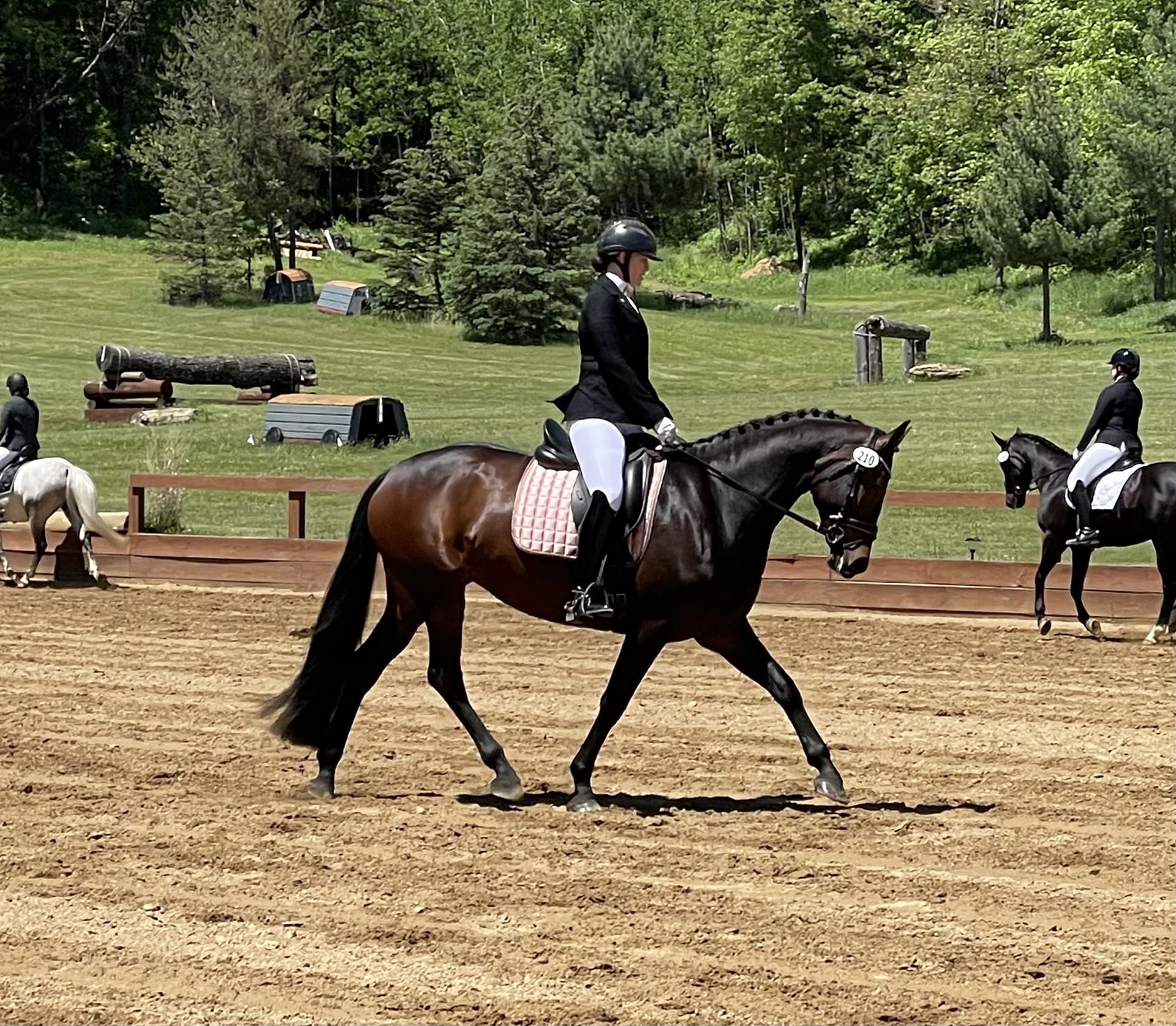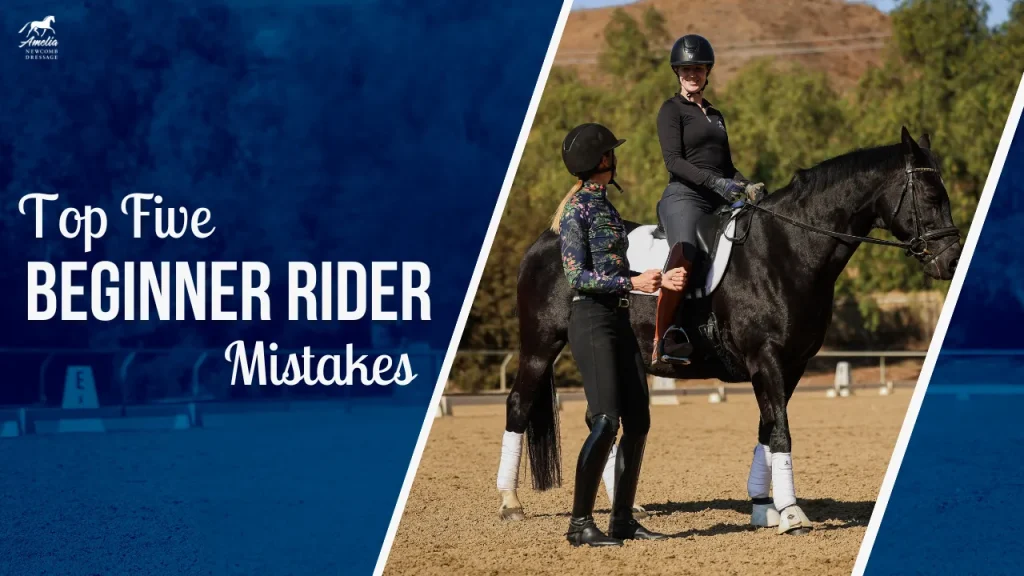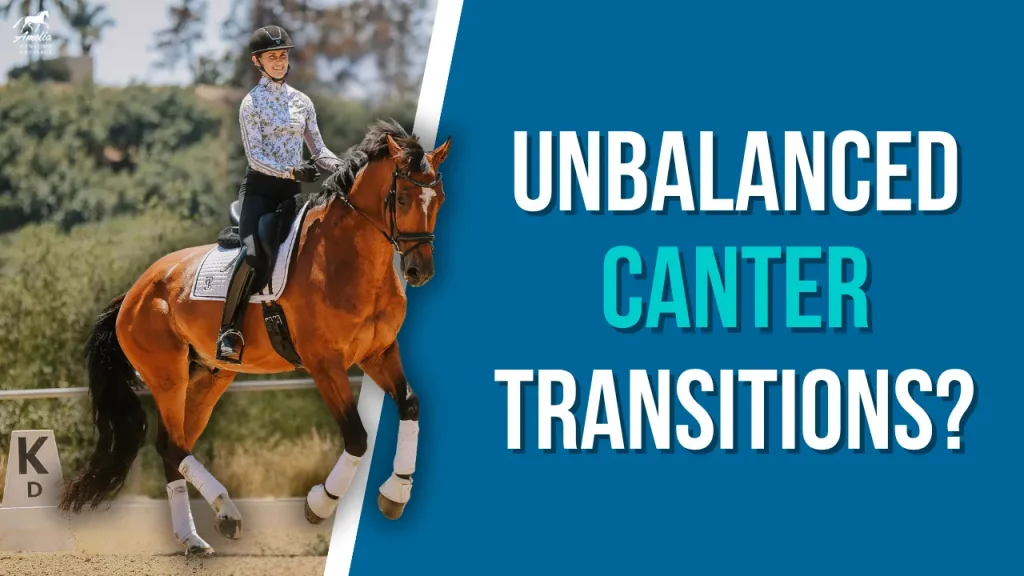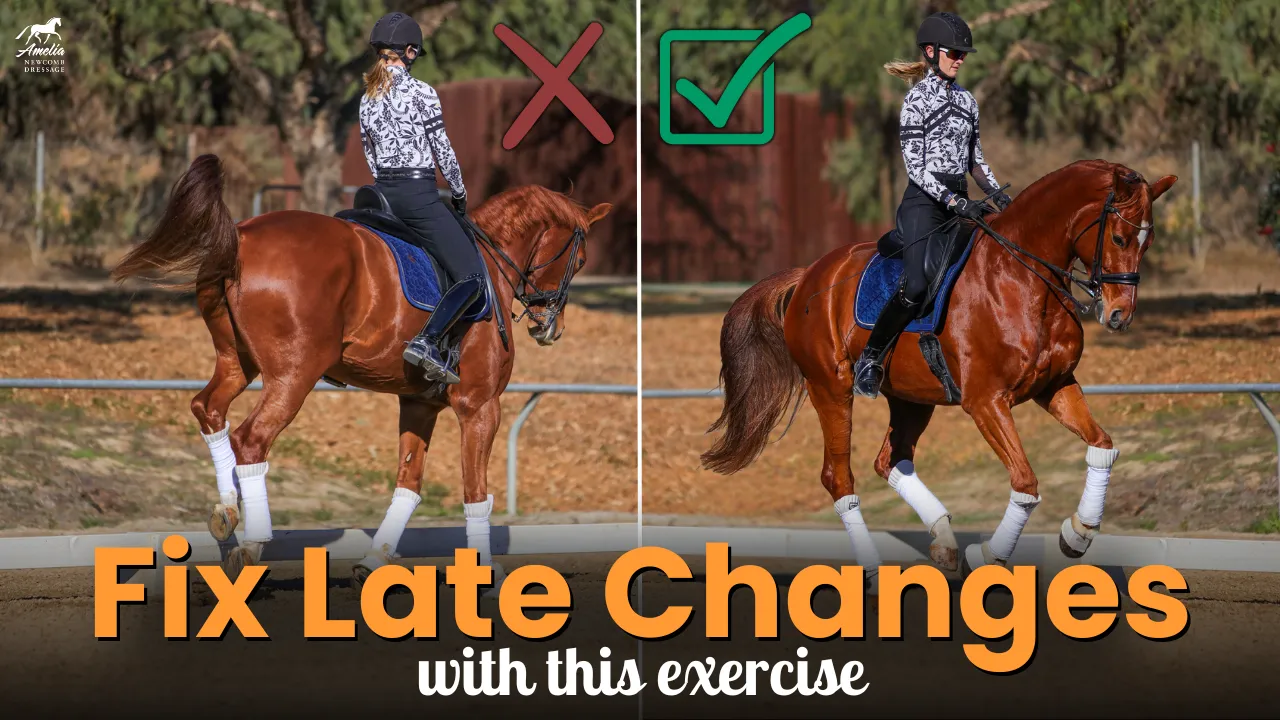
Do you every look at a photo of a rider and wonder what a top level dressage rider might see that you don’t?
Or have you ever wanted to have a photo of you riding critiqued by a top level rider?
If it’s a double yes then you’re going to like this week’s post because I’m inviting you to ‘Train Your Eye with Amelia’! This is something that I did a while back with my patreon members that I now want to share with you.
The “Train your eye with Amelia Newcomb” photo reviews are quick 2-4 minute reads with a submitted photo from a real rider in my community. These articles are designed to help train your eye for dressage, rider position, and more while also giving you associated feedback to help the rider (and you if you have the same habits!). It’s free to participate and I hope you’ll take me up on it.
If you want to submit a picture click the link.
Big thanks to our patreon member Tara (pictured) for being the first to submit to me. Here’s what I had to say!
What I see:
Overall this looks like a lovely pair, the rider seems to be in balance and the horse is on the bit and starting to use their back. The rider is turning her body with her horse and has a steady rein contact, overall looking like she’s in balance and not interfering with her horse’s movement.
Slight points in the rider make me think they might be experiencing a bit of tension and a few slight tweaks in her position should help. Her forearm looks a bit braced and while the bit, hand, elbow line is fairly straight, raising the hand just a tad so it’s out in front of her will make the contact a softer, more inviting place for the horse to go to.
Her toe is turned slightly out and in front of our heel-hip-shoulder line (which would be easier to see if we were on a direct side view rather than this diagonal shot) which tells me that she’s sitting slightly too far back on her butt cheeks rather than directly up and down on her seat bones, Not sitting up and down on her seat bones in neutral spine makes it difficult/impossible for her to have a truly independent seat and to give effective weight and leg aids. Rotating her pelvis forward and rotating her thigh in will help put her leg in a better position and be more effective.
You can see from the horse’s back right footfall that the horse is not over tracking and with the shoulders lower than the croup, the horse is slightly downhill/on the forehand. Of course this horse could be young or still developing the muscles to carry itself more on their hindquarters, so we can’t be too picky. This is a lovely frame for Training/First Level, but for this combination to progress and do the lateral work more easily, they will need to lift the shoulders and develop more sitting power.
How to improve/exercise to try:
To develop sitting power and shift the horse to the hindquarters, any exercise with transitions will help. Remember it’s the focus on correct balance in these transitions that will get the desired results, not just doing the exercises.
These are some videos to help:
-The snowman Dressage Training: The Snowman Exercise – YouTube
-Transitions are Everything in Dressage-https://youtu.be/MmBQeF5OJwE
-The Trot Canter Transition: Common Mistakes and Fixes https://youtu.be/GqCWaTXBv-Q
-How to ride transitions within the Gait https://youtu.be/G_EpLRfk6TI
-Collection: Canter Walk Canter Transitions https://youtu.be/ZH3YS_tW0uc












































